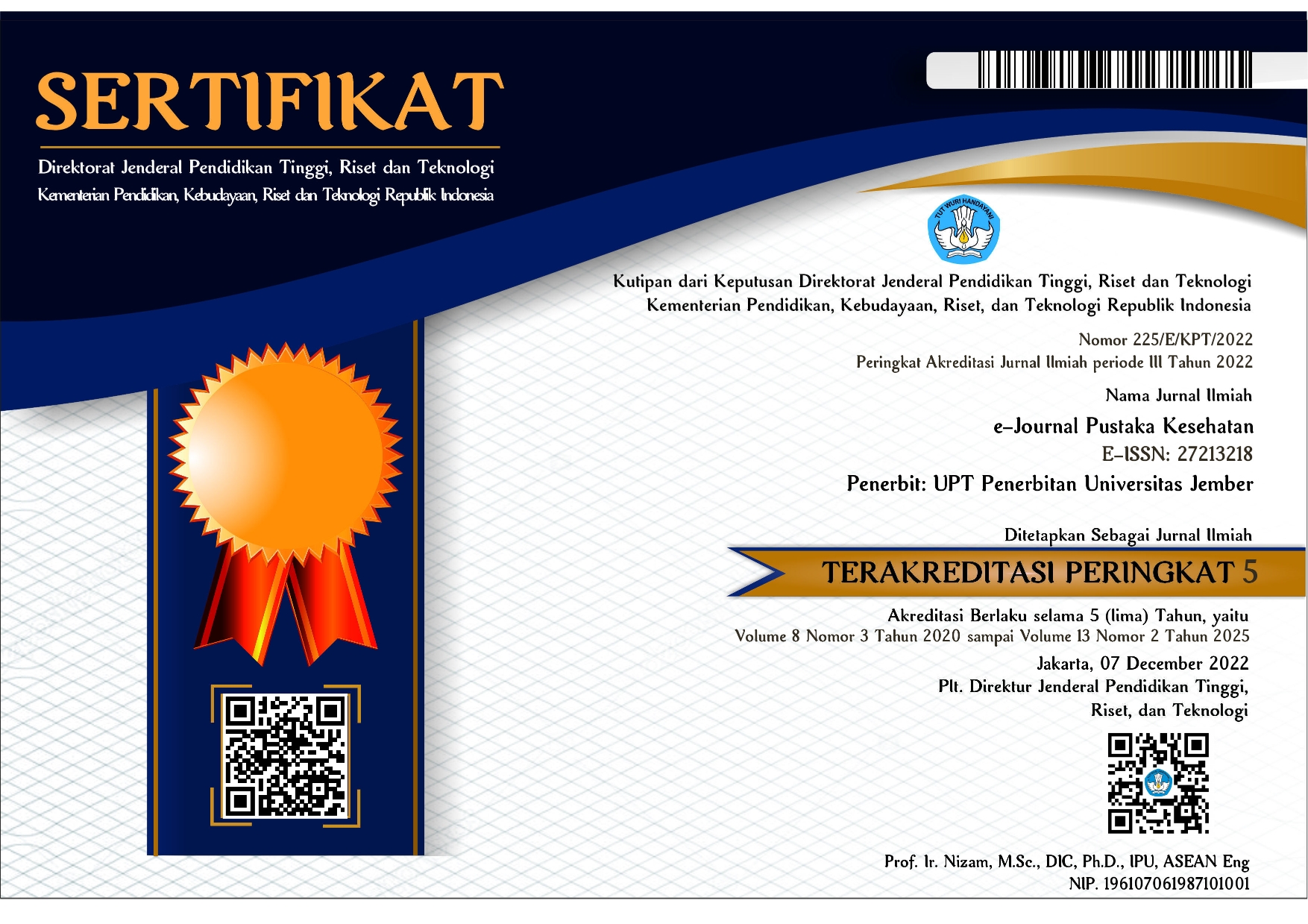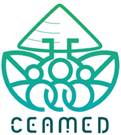Pengaruh Ekstrak Daun Pepaya Terhadap Jumlah Sel Limfosit Pada Gingiva Tikus Wistar Jantan Yang Mengalami Periodontitis (The effect of papaya leaves extract to the number of lymphocytes cells to the male-wistar rat's gingiva that undergo periodontitis)
Abstract
Background. Porphyromonas gingivalis (P. gingivalis) is plaque bacteria caused periodontitis with proteolitic characterised that makes some damages to the periodontal tissues. Lymphocytes are chronic inflamed cells which have specific characteristic when periodontitis was occured. Papaya is known as herbal plants, which contains substances which have antimicroba and antiinflamation activities in its leaves. The purpose of this research is to determinate the effect of papaya leaves extract to the number of limfocyte cells to the male-wistar rats gingival that was periodontitis. Twenty male-wistar rats that were divided to the five groups with different treatments. The first group is control of other group, the second group is treatment group that was induced with P. gingivalis and assembled with a ligature, while the remaining of groups were added with the extract of papaya leaves sondation by certain concentration 25% for the third group, 50% for the fourth group, and 75% for the last group after getting some treatments as the second group. The result of the research showed that the highest lymphocytes cells was found to group that was induced by P. gingivalis and assembled with a ligature. In the contrary, the lowest lymphocytes cells was found to the fifth group that was treated with the extract of papaya leaves 75%. It concluded that papaya leaves extract decreased the number of lymphocytes in periodontitis male-wistar rats gingival. The most effectively of papaya leaves extract that was used is 75%. Advanced research about the compound of the extract of papaya leaves which most influential and the mechanism to the decrease of the number of lymphocytes cells are needed.
Keywords: Papaya Leaves Extract, Periodontitis, P. gingivalis
Downloads
Downloads
Published
Issue
Section
License
e-Journal Pustaka Kesehatan has CC-BY-SA or an equivalent license as the optimal license for the publication, distribution, use, and reuse of scholarly work. Authors who publish with this journal retain copyright and grant the journal right of first publication with the work simultaneously licensed under a Creative Commons Attribution-ShareAlike 4.0 International License that allows others to share the work with an acknowledgment of the work's authorship and initial publication in this journal.







